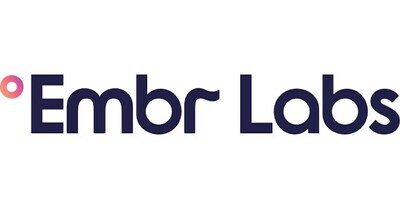Industry-Academia partnership leads to breakthrough for women experiencing menopause.
BOSTON, Sept. 13, 2023 /PRNewswire/ — Boston-based technology startup Embr Labs is announcing the next stage of development for the Embr Wave: a consumer wearable that utilizes temperature sensations as haptic therapy. Together with researchers at the University of Massachusetts Amherst’s Institute for Applied Life Sciences (IALS), the company has co-developed the ability to predict a menopausal hot flash before it occurs and then activate immediate cooling on the Embr Wave to mitigate or fully alleviate a hot flash.
The team generated the largest data set of digital biomarkers for hot flashes ever collected and utilized machine learning to develop algorithms that can predict a hot flash before it is even felt by a person.
“Hot flashes occur in 75% of women and can persist for up to a decade,” says Matt Smith, co-founder and CTO of Embr Labs. “We are proud to be developing effective tools for menopause, which has lacked new solutions for too long. By delivering automatic cooling for hot flash relief, we are realizing the holy grail for natural hot flash management.”
Unlike previous attempts to combat hot flashes, this is a non-pharmaceutical approach. The current generation of the Embr Wave is worn on the inside of the wearer’s wrist and warms or cools at the touch of a button to elicit a brain and body response that can help resolve hot flashes, improve sleep and relieve stress. The new predictive sensor technology will be commercialized in an upcoming generation of Embr Wave.
Embr Labs was recently awarded a patent for the utilization of biomarkers to activate cooling for hot flashes, and an additional patent has been filed for features powering the corresponding predictive algorithms. A manuscript is in preparation that will benchmark the performance of the predictive algorithms and reveal the science behind hot flash prediction. Embr Labs recently announced a $35M financing round to support market expansion and new product development.
“Seeking immediate cooling relief is a person’s natural reaction when they are having a hot flash,” Smith says. “We now have the know-how and technology to bring this solution into the 21st century: personalized and automatic hot flash management from a small, AI-powered, wearable device.”
“This technology is fundamentally different from most other wearable health technologies, such as activity trackers,” says Mike Busa, director of the UMass Amherst’s IALS Center for Human Health and Performance. “This concept of automatic intervention based on real-time physiological symptoms is relatively unexplored. What has dominated the landscape up to this point is only tracking—letting you know the status of something or letting a care team know that a certain phenomenon has occurred. That technology most certainly has its strengths, but a major limitation is that it does not provide real-time, automated intervention to the person who is dealing with impactful symptoms.”
Instead, Busa describes the new system as a “reactive digital drug” for hot flash symptoms. “The solution is not quite so simple as hot plus cold equals neutral,” he explains. “In this case, we leverage early physiological changes that precede a person’s perception of an oncoming hot flash and provide early relief that aims to automatically deploy an intervention tailored to minimize the disturbance of the hot flash symptoms.”
It all happens in real-time. “The device is communicating the data to servers and back to the device in a fraction of a second. That’s the power of data and cloud computing combined with the immediate cooling made possible by Embr Labs’ thermal technology,” Busa says.
The cutting-edge predictive technology was made possible by grants from the Massachusetts Life Sciences Center and the National Science Foundation.
This is the second collaboration between Embr Labs and UMass Amherst. Previously, Rebecca Spencer from the Sleep Monitoring Core at IALS and Department of Psychology conducted a pilot study, and the results were presented at the 2022 North American Menopause Society. That study found that use of the Embr Wave was associated with improved sleep and reduction in self-reported frequency and intensity of hot flashes and improvement in the impact of stress.
CONTACT:
Sam Shames, [email protected]
Julia Westbrook, [email protected]
About Embr Labs, Inc.
Embr Labs is the leading healthtech company addressing the symptoms of menopause by pioneering the use of temperature as a new pathway to the brain. Embr Wave is now distributed through major US retailers, as well as Boots.com in the UK. The company’s patented technology has been clinically validated and delivers a brand-new category of safe and natural solutions to manage hot flashes, sleep issues, stress, and thermal discomfort. The company was founded by MIT-trained engineers and is backed by investors including Bose Ventures, DigiTx Partners, Safar Partners, Esplanade Ventures, and Ghost Tree Partners. Embr Labs has won numerous awards for the Embr Wave, including the AARP Innovation in Aging Award, Time Magazine’s Best Inventions, the iF Design Award and was named to CB Insights’ Digital Health 150.
About UMass IALS
The Institute for Applied Life Sciences (IALS) at the University of Massachusetts Amherst translates fundamental research into innovative product candidates, technologies, and services that deliver benefits to human health and well-being. This is achieved by combining deep and interdisciplinary expertise of more than 200 faculty-led research groups from 29 departments on the UMass Amherst campus, with diverse capabilities from industry and government partners.
![]() View original content to download multimedia:https://www.prnewswire.com/news-releases/embr-labs-and-umass-amherst-develop-technology-that-can-predict-hot-flashes-301925454.html
View original content to download multimedia:https://www.prnewswire.com/news-releases/embr-labs-and-umass-amherst-develop-technology-that-can-predict-hot-flashes-301925454.html
SOURCE Embr Labs

Featured image: Depositphotos © hasloo





